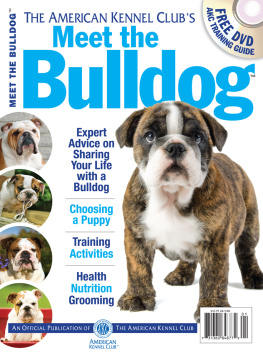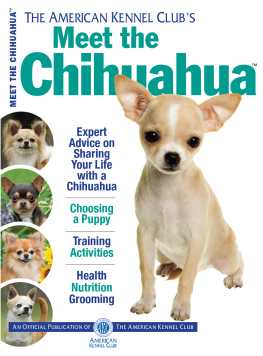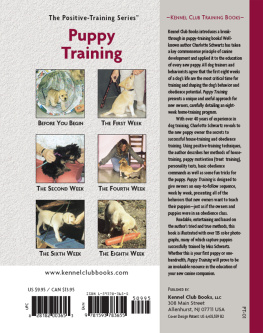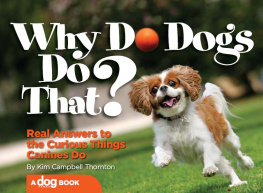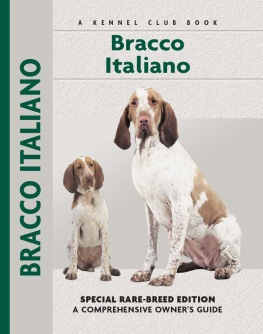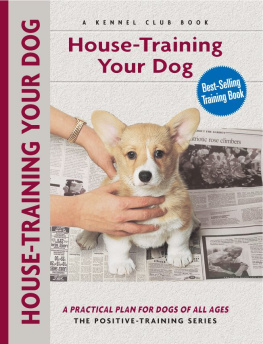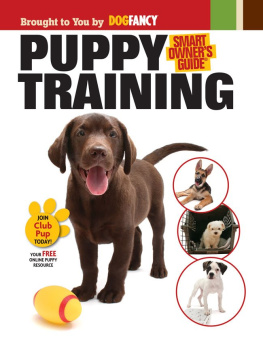Karla Austin, Director of Operations and Product Development
Nick Clemente, Special Consultant
Barbara Kimmel, Editor in Chief
Kara Smith, Production Supervisor
Heather Malk, Layout Design
Cover and book design concept by Michael V. Capozzi
Copyright 2008 by I-5 Press
Illustrations copyright 2008 by Buck Jones
The dogs in this book are referred to as he and she in alternating chapters.
All rights reserved. No part of this book may be reproduced, stored in a retrieval system, or transmitted in any form or by any means, electronic, mechanical, photocopying, recording, or otherwise, without the prior written permission of I-5 Press, except for the inclusion of brief quotations in an acknowledged review.
Library of Congress Cataloging-in-Publication Data
Thornton, Kim Campbell.
Safety / by Kim Campbell Thornton ; illustrations by Buck Jones.
p. cm. (Simple solutions)
ISBN: 978-1-933958-25-5
eISBN: 978-1-620080-75-7
1. DogsSafety measures. I. Jones, Buck. II. Title.
SF427.T4926 2008
636.7'0893dc22
2007030958
I-5 Press
A Division of I-5 Publishing, LLC
3 Burroughs
Irvine, CA 92618
Printed and bound in Singapore
13 12 11 10 09 08 1 2 3 4 5 6 7 8 9 10
Contents
Safety Begins at Home
Its said that most accidents occur in the home. Thats true for pets as well. With their innate curiosity, desire to test everything for edibility, and super sense of smell, dogs fall prey to household accidents every day. They snarf up snail bait, gnaw on electrical cords, drink out of the toilet, eat socks and dish towels, and the list goes on.
Some dogs survive these incidents unscathed; others get an upset tummy. But occasionally a dogs exploratory forays result in much more serious consequences, from expensive emergency surgery to, sadly, death by electrocution, poisoning, or intestinal obstruction. With a little preparation, however, you can keep your dogand your home and belongingssafe.
Dog proof your home before you bring home that new puppy or shelter adoptee, and youll have fewer destructive incidents. It's never too late to start.

Start by getting down on your hands and knees. You want to look at every aspect of your house from a dogs-eye view. Think like a dog. Dont the cords underneath the desk look chewable? The cord hanging down from the mini blinds would be awfully fun to grab onto and pull. And if you paw at it enough, that bathroom cabinet door opens right up.
Once youve identified the dangers, you can put hazardous items and things you dont want broken or destroyed out of your dogs reach, make them unpalatable, or block them from her attentions. Here are some tips:

Place trash up highon top of the refrigerator or behind a latched cabinet.
Put child locks on cabinets containing food, medications, or toxic substances such as cleansers or poisons.
Use a spray-on unpalatable substance to prevent chewing on furniture (test it first to make sure it doesnt discolor anything).
Put up baby gates to block access to forbidden areas.
Keep shoes and dirty clothes behind closed closet doors.
Place magazines, books, and treasured breakables out of reach.
When youre not able to supervise a lively dog, confine her to a crate or a room thats completely dog proofed, such as a bathroom or a laundry room.

Common Household Risks
When we think about dangers to pets in the home, we immediately think of two: electrocution from chewing on electrical cords and poisoning from ingesting toxic substances. Dogs, however, find countless creative ways to injure themselves. With a little forethought, though, you can prevent most such incidents.
That Daring Young Dog
Who doesnt know a dog that loves to jump up onto the sofa for a nice nap or simply to observe family goings-on from a high vantage point? Some breeds, such as the Japanese Chin and the Italian Greyhound, have been known to use furniture as a launching pad to reach even higher places in the home, such as fireplace mantels. You may think your dog isnt capable of reaching anything on the kitchen counter, but dont be surprised if one day you come home and find hes jumped from chair to table to counter, knocked a box of scone mix to the floor, and jumped back down to eat it. Tall breeds such as the Greyhound dont need to climb. Theyre well known for their counter-surfing abilities.

But landing badlyor simply placing too much stress on still developing bones and jointscan lead to strains, sprains, and broken bones. Tiny dogs with fragile bones are especially prone to fractures from jumping off furniture, but larger dogs can injure themselves as well.
Teach your dog from day one to use a set of steps to get on and off furniture. Pet steps are widely available at pet supply stores or through catalogs or online pet retailers. Consider rearranging furniture to deter acrobatic dogs from climbing to unsafe heights or reaching things they shouldnt. If you have slick hardwood or tile floors, lay down some area rugsuse antiskid rug holdersto provide good footing and prevent your dog from slipping and sliding into a wall or a heavy piece of furniture.

Stairs are another safety hazard. A dog thats not used to them may tumble head over tail down them; a small dog could jump or fall through the railings on open stairways. Use a barricade until youre sure your dog can navigate stairs without incident.
Those Pesky Cords
Electrical cords and cords for window blinds pose a threat to dogs; both are found in almost every room of the home. Biting down on an electrical cord can give a dog a nasty shock or even kill him; getting tangled in window blind cords can choke or otherwise injure him.
To prevent electric shocks, unplug what you can. Cover cords with tough plastic cord covers, or run them through flexible plastic tubing (both are available at hardware stores). Wrap long cords up and place them out of reach. If you have a home computer, consider acquiring a wireless keyboard and a rechargeable cordless optical mouse to cut down on the number of cords in your home.
Products made of protective tubing work with phone cords, computer wires, and other household appliance cords, including Christmas lights and audio/video connection cables. Some are citrus scented, which deters some dogs; its also tough enough to withstand chewing, if need be.

Another option is to coat insulated cords with unpleasant substances. Try coating them with a foul-tasting spray or paste; smearing them with glue and then sprinkling on some cayenne pepper; coating them with Tabasco sauce, Mentholatum, or moistened bar soap; or wrapping them in aluminum foil, which most dogs dont like to bite down on
Next page

